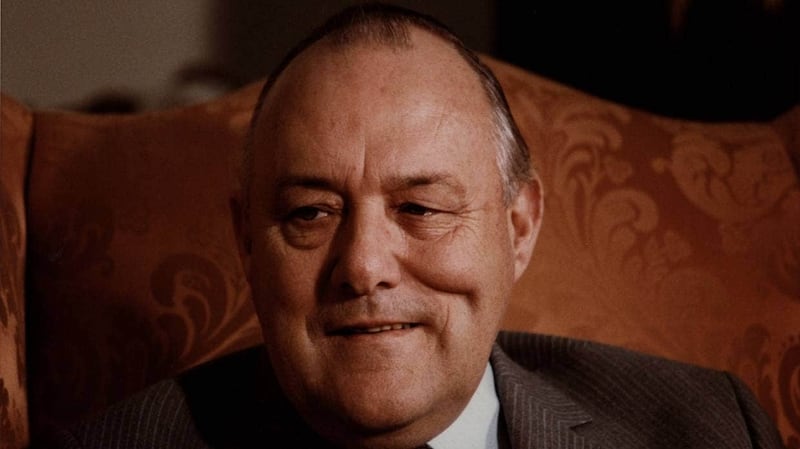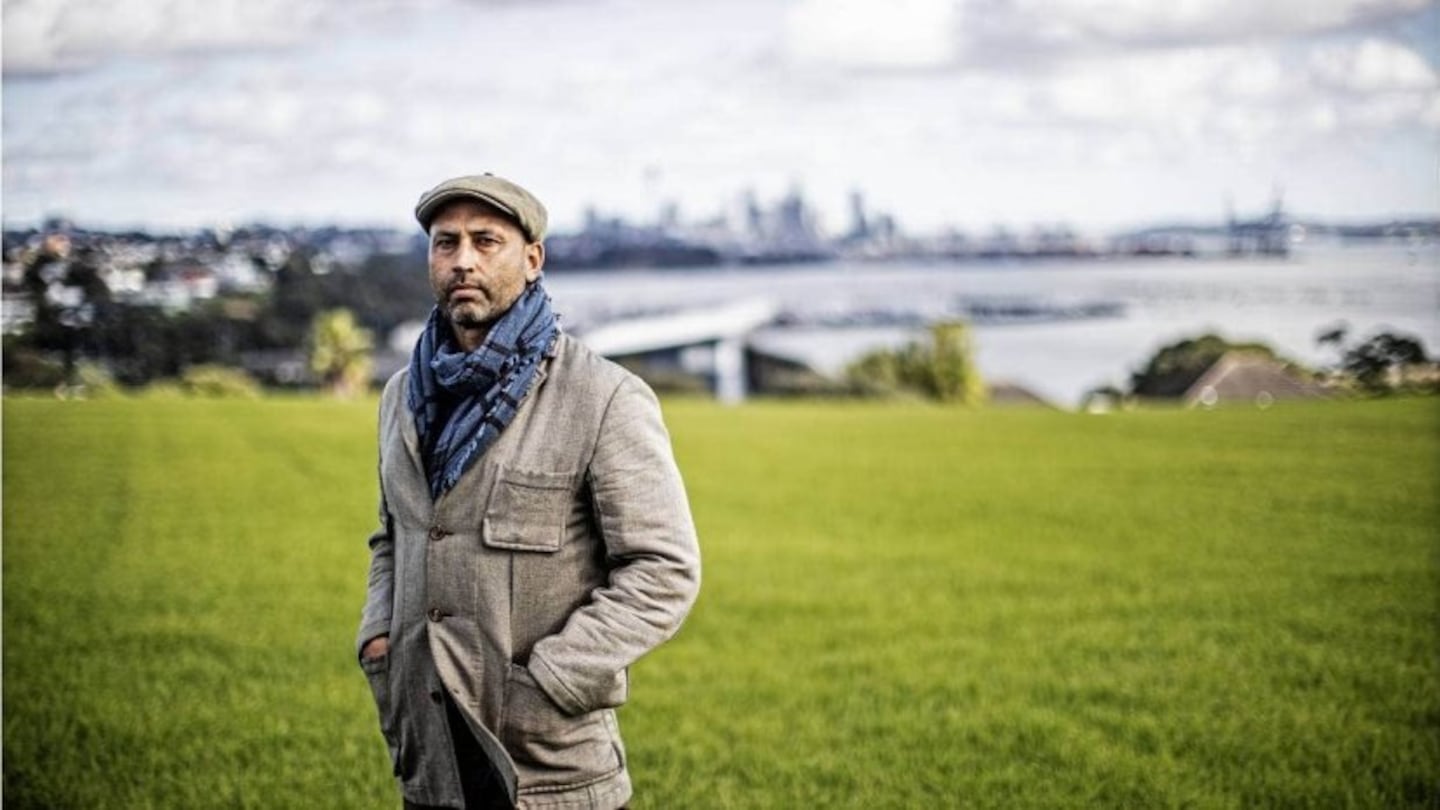Ngāti Whātua Ōrākei Trust deputy chairperson Ngarimu Blair was a preschooler during the Bastion Point occupation. Lawrence Smith / Stuff
By Katie Doyle, Stuff
On Thursday, May 25, it will be 45 years since police stormed Takaparawhau Bastion Point, ending a 506-day occupation. A 3-year-old at the time, the deputy chairperson of the Ngāti Whātua Ōrākei Trust talks to Katie Doyle about the past, present and future of his iwi.
Ngarimu Blair doesn’t remember much about the political climate of 1970s Auckland – he was just a toddler at the time.
But occasionally something so monumental happens that it becomes etched in your mind, even if you don’t realise it then.
For Blair, who is now deputy chairperson of the Ngāti Whātua Ōrākei Trust, it was a visit from the man everyone called “Piggy Muldoon”.
The prime minister, real name Robert Muldoon, was coming to chat about Bastion Point.
“Piggy Muldoon… was coming to visit my great-grandfather to discuss issues surrounding… the land at Ōrākei and the Ōrākei block,” Blair recalls.
“My great-grandfather actually wasn't a supporter of the protest. And he had a line of communication with Muldoon and with government officials.”

The then prime minister, Sir Robert Muldoon, was colloquially known as ‘Piggy Muldoon’ during and after his tenure. Photo / Supplied
The 506-day occupation of Bastion Point saw battle lines drawn in Auckland, with protesters fighting against the proposed Crown sale of land above Tāmaki Drive.
It symbolised Māori land issues and became a flashpoint of debate, sometimes from within the central Auckland iwi.
Since the time of Governor Hobson, Ngāti Whātua had always tried to work alongside the Crown to resolve differences and many in the late 70s felt that should continue, Blair explains.
Looking back, he is supportive of both approaches. “I believe we need to use all reasonable methods, including direct action, in the face of great injustice.
“In 78, there were two pathways being pursued. One was the direct protest action which had the impact of raising the social consciousness of these issues, not only for us, but for Maōridom generally.
“The story was finally out there about how this very generous hapū had gifted all of central Auckland and were turned into, in very quick time, paupers in our own land.”
The other strategy was to pursue justice and land reclamation through direct negotiation and legal means.
It culminated in a trip to the Waitangi Tribunal in the 1980s, where Blair says Ngāti Whātua came together and laid out their story, dating back to 1840.
Every breach of Te Tiriti by Auckland Council and the Crown was described in detail, as was the systematic separation of Ngāti Whātua from every single acre of their land.
Blair says that led to the return of 100 acres from the 700-acre Ōrākei block, most of which could not be developed without reference to Auckland Council and city residents.
Therefore, most of it remains a public reserve to this day.
“A very small part of that we can use for economic development, which is where we have a rest home and retirement village – a commercial one. And then $3 million cash. That was the settlement in 1991.”
The Crown also wiped the debt from 33 houses owned by Ngāti Whātua on Kitemoana St, which the iwi had been forced to buy back in the 1970s.
Another win for Ngāti Whātua was that the marae at Ōrākei was returned to their control, says Blair. It had originally been a creation of the Crown to represent all Māori in Aotearoa.
“Which was a huge, huge insult to our people that the Crown could decide to use our land that they had stolen off us unjustly to then build a marae, not for us, but for all the people of Auckland.”
Today, Blair estimates Ngāti Whātua is worth close to $2 billion, but that hasn’t come without enormous work and sacrifice.
The $3m in cash received as a result of the 1991 settlement was leveraged to purchase other areas of land in downtown Auckland, he explains.
In the mid-90s, Blair says, the Government was looking to sell off railway land, which had originally been Ngāti Whātua seabed.

Ngāti Whātua funded its Treaty settlement, Blair says. Lawrence Smith / Stuff
While the iwi had sold, given or leased some of the land in the area, there was no piece of paper that said anything about the seabed.
Rather than launch a Waitangi Tribunal claim over the seabed theft, Blair says Ngāti Whātua secured the rights to buy it back.
When it came time to settle the wider Auckland region, separate from the Ōrākei block, Ngāti Whātua went back to the negotiating table with the Crown and ended up purchasing more land later on, says Blair.
“We have 27 hectares of land from that era in the mid-2000s… but we funded our Treaty settlement.”
For Blair, Bastion Point isn’t the catalyst for everything Ngāti Whātua has built today, but it is a momentous moment in the history of the iwi.
“It’s one of the chapters going right back to the protests over Parnell… This is in the 1870s which we said was not included in the first gift, but somehow they drew the map in a way that it was.”
Despite all that has gone on though, Blair says elders within Ngāti Whātua still drum in the importance of working with the Crown.
“However, we certainly hold the Crown to account wherever we can, so when they have offered our ancestral land to settle the dubious claims of other iwi who do not live here, who have not lived here for a long time, and who may have … actually never lived here, then we will not stand for it.”
If recent events are anything to go by, the next battle facing Ngāti Whātua could be against Waikato Tainui, who asserted their mana whenua status during the Te Matatini pōwhiri.
When asked about it, Blair is philosophical. Ngāti Whātua aren’t looking for a fight, and are content with their “humble, little, relatively tiny tribal area in central Auckland”.
But they’ve had to fight for every acre of that area, he says, and won’t give it up for anyone.


